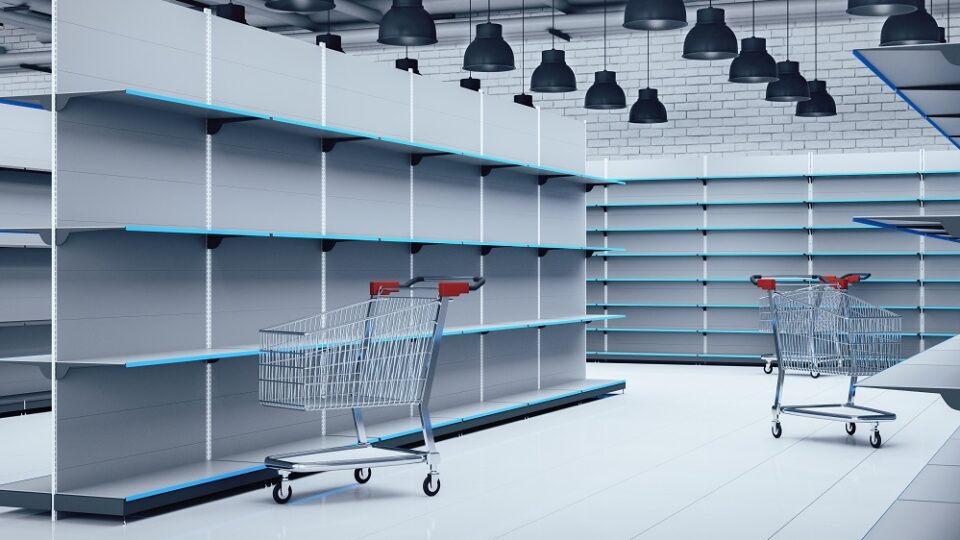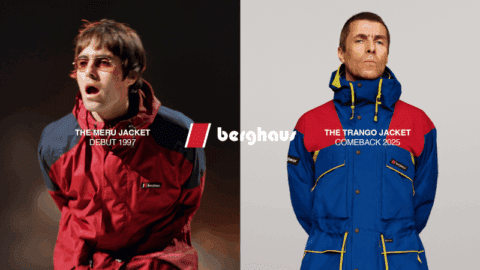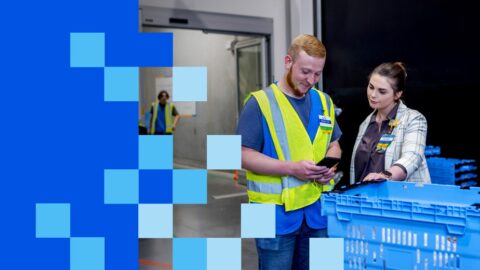Sustainability goals are all well and good, but too often they remain just that — goals rather than actual, measurable achievements. Sometimes this is due to deliberate greenwashing, but more often it’s a problem of planning and execution, according to Christian Davies, Principal at Bergmeyer+, the new sustainability-focused division of retail design firm Bergmeyer, operating in partnership with SMS Collaborative.
“In our first conversation with [SMS CEO and Founder] Annie Bevan, she kept repeating that ‘You have to be specific about what you mean and what you can do,’ when it comes to sustainability initiatives,” said Davies in an interview with Retail TouchPoints. “Companies often start by saying ‘We’ll be net-zero by 2050,’ but that’s a long way away, and we don’t have that long. When we ask companies how they’ll get to that goal and say ‘Let’s talk about your roadmap for an 18-month plan,’ there’s nothing there.”
Bergmeyer+ represents an attempt to help retailers create specific, granular and achievable sustainability plans, offering both consulting and operational services to turn those plans into realities. And it’s starting with an area that’s often overlooked: store fixtures. Davies sees significant growth potential for the division — and the possibility to effect real change for the industry on a vast scale.
Retail TouchPoints (RTP): Why did Bergmeyer+ start with a focus on fixtures?
Christian Davies: We had lots of conversations about areas like store lighting and construction, but we focused on fixtures because they’ve been flying under the radar. The LEED [environmental rating system] puts them in the furniture bucket. But when we began looking at the whole fixture industry, we found that it was an enormous machine, and we also uncovered how little has been done.
The fixtures in any store probably weren’t designed with sustainability in mind, nor manufactured in sustainable ways, or they were shipped without any thought about the carbon impact of getting them to the store. Probably one of the biggest things was that there’s usually no plan for their end of life, which means they end up in landfills almost all the time. The potential is all massive upside, since any one of those four buckets has huge potential for change.
RTP: What kinds of actions can have the biggest impact in making store fixtures more sustainable?
Davies: This goes all the way back to [the way we train] students in design school, and it’s about understanding the impact of design upfront. Typically we design fixtures based on what the client wants, and then we figure out ways to make them as green as possible. But if you start with a blank sheet of paper and look at it with a sustainability lens, you might end up at a completely different place. [Designing that way is] infinitely easier than retrofitting.
The same concept applies to the store as a whole. One retailer we’re talking to has beautiful existing stores, and they’re asking “How can we make the greenest version of that store?” That’s meaningful and profound work. But, if you went back to the drawing board to build a store that started through the green lens, it would probably look completely different than that existing store. Maybe both of those exercises are valid — you clean up [what you have] as best you can, and the other one would be a store of the future.
RTP: Can you provide an example of designing for sustainability?
Davies: One of the things we show people is based on the Reitveld Crate chair, which is basically an Adirondack-style chair made out of only eight pieces of lumber. Its form is determined by the raw materials rather than branding and aesthetics, and the only waste [created] is the sawdust from the cross-cut saw and the drill holes. That’s a mindset shift from the design standpoint.
Another element is, when you have two pieces to fit together, do you bolt them or weld them? If you bolt them, when you’re done with that fixture you can take it apart, and its pieces can be refinished or reused; you can’t do that if they are welded together. That’s a profound difference.
RTP: How do you tie these types of small but important changes to broader sustainability actions?
Davies: Broadly, we benchmark and evaluate the three big “C’s” — carbon, chemistry (toxicity) and circularity (waste) of current store fixture programs. These are the “bones” of any sustainability initiative, but they’re interconnected. Say you wanted to remove all toxic materials from anything in your store — but the supply of these [non-toxic] fixtures might come from much further away, [adding to your carbon footprint]. It’s a question of which one you want to start with.
One of the things we’re most excited about is a return to U.S. domestic manufacturing [of fixtures]. There used to be a thriving fixture industry, but a lot of those skills have been lost from a labor standpoint. [Nearshoring] would have enormous implications for resources, shipping and transportation, and it could even open up new manufacturing opportunities like using 3D printing. That gets a bad rap because the [raw material] is plastic, but you can get it formulated to be biodegradable. More importantly, down to the micron level, 3D printing uses just enough material [to make what you] need; there’s no waste. But it’s much harder to manage that [process] on the other side of the world.
It’s also important to note that we’re not limited to the three C’s; other elements include equity and inclusion of local communities and workforces. I’m imagining, say, five years from now, when a retailer could say, “We’re making everything for our stores within a 100-mile or a 300-mile radius of each store, and made with local labor.” A big retailer might have five separate factories around the country making fixtures for its U.S. store network. These are not pipe dreams; we’re seeing retailers like Arc’teryx testing them out.
RTP: Are there retailers today that you think are doing a good job with their sustainability initiatives?
Davies: The “gold standard” we’ve been using is Marks & Spencer’s Plan A. (It’s called that because there is no Plan B.) They made something like 200 sustainability pledges that they would try to hit, and systematically worked to knock those dominoes down — and every time they hit one, they re-up another one. Plan A is filled with specificity, timelines and roadmaps.
But as many successes as Plan A has had, it also uncovered huge blind spots, or spots where people said, “This is much more difficult than we thought it would be.” Regardless of these blind spots, they’ve seen a 76% reduction in refrigeration energy use, and 90% of their packaging is now easily compostable.
RTP: Can you give me an overview of how you operate with retail clients?
Davies: The first step toward making meaningful change is to come to a common understanding of language, standards and ways to measure things. In super-simplistic terms, steel might be rated a “six” while aluminum might be rated a “seven” on a sustainability scale, so we can say that as an industry, if you make things out of one material, it’s better than making things out of the other. We say to retailers that over time they can impact their sustainability footprint, but only if we can all agree on what the metrics are.
Then we’ll have the goals conversation with retailers. We review what they’ve said [about sustainability] and decide if it’s applicable and meaningful — and if it’s not, we help them change, improve or even write that statement. That’s important because we want to tie their goals to the company’s broader values and purpose. For example, if you don’t want to create any more waste, that would lead to a certain action plan, while reducing energy consumption and your carbon footprint would lead to another. Essentially, no two plans for any two retailers will look the same, because it depends on their mission, their focus and their values.
Then we look at their market, because there are wild differences among grocery, beauty and apparel retailers, for example. Then it’s about how many stores the retailer operates; are they regional, national or international; and what are the sizes of their stores — it’s very different to look at a 10,000-square-foot footprint versus a 50,000-square-foot one. And then we examine their operational model to see where they buy the materials that go into their stores.
Then we’ll audit the retailer, its suppliers and all the things affecting that supply chain, because the supplier has suppliers, and those suppliers have suppliers. We ask, “Do you know what your pieces are made of and what their chemical composition is? Do you know what raw materials you’re using?” It becomes kind of like detective work.
We offer a range of services. Some suppliers want to take control [of sustainability goals] and report back to us, while some retailers want to take an active role in instituting standards. We track progress and gather data that the retailer can then report out.
RTP: Where would you like to see Bergmeyer+ in a year’s time?
Davies: Our use of the “+” sign in our name is a distinct decision and reflects our positive, forward-looking approach. Bergmeyer+ is about positive momentum, and because of the scale of the retail industry, incremental changes can have enormous end results.
In a lot of cases, it only takes one retailer to say, “This is our store of the future, it’s the greenest thing we’ve ever built.” They could invite people to come see it and talk about its energy use, toxicity and circularity. I’m excited about Bergmeyer+ because if we could get one, two, five, 10 or 20 retailers to think this way, the results could be profound.















